Sprays and aerosols can be developed more effectively by measuring spray particles and droplet size distributions in real time with Malvern Panalytical’s Spraytec laser diffraction technology. This technology provides reliable and reproducible droplet size data while meeting the particular needs of spray characterization.
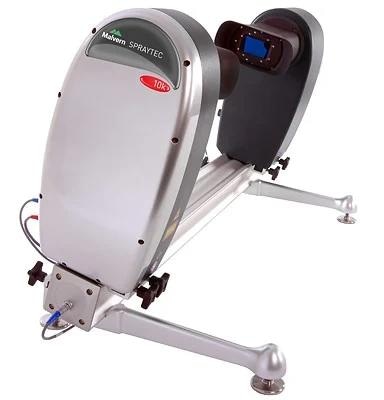
Image Credit: Malvern Panalytical Ltd
Features and Benefits
Malvern Panalytical’s Spraytec, which incorporates more than 35 years of experience in spray applications, offers the data needed to completely comprehend spray and atomization processes. It will:
- Measure across a wide size range (0.1 - 2000 microns) without requiring regular optics adjustments
- Measure droplet size variations over time at up to 10,000 measurements per second
- Produce precise, concentration-independent findings by applying a unique multiple-scattering analysis
- Define broad spray plumes without running the risk of causing optical contamination
- Simply expose the dynamic variations in spray particle size using its unique size history analysis software
How it Works
The Malvern Panalytical Spraytec employs laser diffraction to assess the size of spray droplets and spray particles. It accomplishes this by measuring the intensity of light dispersed as a laser beam passes through a spray. The data is then evaluated to determine the size of the droplets that caused the scattering pattern.
The primary components of the Spraytec system are as follows:
- A transmitter module that houses the collimated laser light source used to illuminate the spray during measurement
- A receiver module with one of two lenses (300 mm or 750 mm) to focus any light dispersed by the spray onto a series of detectors. These detectors reliably measure the intensity of light scattered by spray droplets from various angles.
- An optical bench that keeps the transmitter and receiver aligned. The length of this bench can be adjusted to suit different uses, with the longest bench being 2.5 m long.
- The Malvern Panalytical Spraytec employs laser diffraction to assess the size of spray droplets and particles. It accomplishes this by measuring the intensity of light dispersed as a laser beam passes through a spray. The data is then evaluated to determine the size of the droplets that caused the scattering pattern.
Specification
Source: Malvern Panalytical Ltd
| General |
| Principle |
Laser Light Scattering |
| Analysis |
Mie and Fraunhofer scattering, including a patented multiple scattering analysis |
| Data acquisition rate |
Rapid mode: 10 kHz. Continuous mode: 1 Hz. |
| Maximum Measurement Time |
Rapid mode: 30 seconds. Continuous mode: 60 minutes |
| Measurement Triggering |
Internal: Based on transmission or light scattering levels. External: Based on TTL input or simple switch trigger. |
| External Device Synchronization |
Via 2 TTL trigger outputs. |
| Optics |
| Light source |
Max 4 mW He-Ne Laser, 632.8 nm. |
| Lens arrangement |
Fourier (parallel beam). |
| Lens Focal Length |
300 mm and 750 mm. |
| Measurement range |
150 mm at 0.5 µm, extending to greater than 1 m above 5 µm. |
| Detector |
| Arrangement |
36-element log-spaced array. |
| Angular range |
0.015 – 17 degrees.** |
| Alignment |
Automatic. |
| Sizing Performance |
| Particle size |
300 mm lens: 0.1 – 900 µm (Dv50: 0.5 – 600 µm). 750 mm lens: 2 – 2000 µm (Dv50: 5 – 1600 µm). |
| Accuracy |
Better than 1%.*** |
| Repeatability |
Better than 1%.*** |
| Reproducibility |
Better than 1%.*** |
| Software |
| 21 CFR part 11 |
Enables an operating mode that assists with ER/ES compliance. |
| System Compliance |
| Laser safety |
Class 3R, IEC60825-1:2007 and CFR Chapter 1: Sub-chapter J: Part 1040 (CDRH). |
| Regulatory testing |
CE / FCC compliant. Meets requirements of the European Low Voltage directive. |
| Weight and dimensions |
| Laboratory systems |
950 mm optical bench: 950 mm x 550 mm x 610 mm (36 kg). 1400 mm optical bench: 37 kg 1400 x 550 x 610 (37 kg). |
| Spray Facility Systems |
950 mm optical bench: 950 mm x 550 mm x 650 mm (36 kg). 1400 mm optical bench: 1400 x 550 x 650 (37 kg). |
| System |
| Power |
100/240 V, 50/60 Hz. |
| Product storage temperature |
-20 °C to +50 °C. |
| Operating temperature (°C) |
+15 °C to +40 °C. |
| Humidity |
80% maximum for temperatures up to 31 °C, decreasing linearly to 50% at 40 °C. Non-condensing. |
| Ingress Protection (IP) rating |
IP65 when in normal use |
*This defines the maximum allowable distance between the far edge of the spray plume and the Spraytec receiver lens.
**Lens dependent.
***Relates to the measurement of the Dv50 for NIST-traceable latex standards. Sample dependent.
Accessories
Aerosol Positioning Accessory
The Malvern Panalytical Spraytec aerosol positioning accessory allows users to accurately position aerosol cans or pump sprays in relation to the Spraytec laser diffraction measurement zone during spray droplet and particle size measurements.
This helps to reduce a substantial source of variability associated with spray measurements, allowing for consistent testing of domestic and personal aerosol products.
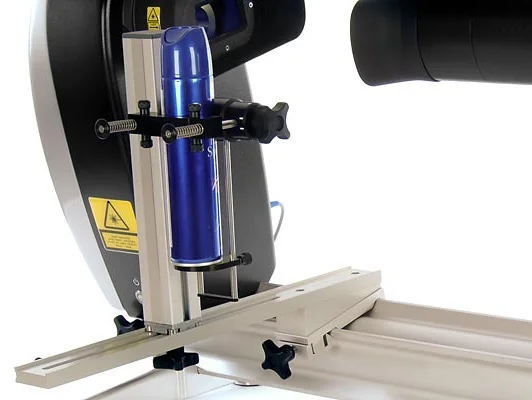
Image Credit: Malvern Panalytical Ltd
Air Purge Accessory
The Air Purge Accessory prevents spray droplets from accumulating on the Spraytec optics while measuring wide or concentrated spray plumes. This allows for routine characterization of products like paint sprays and agrochemical application systems.

Image Credit: Malvern Panalytical Ltd
Extraction Accessory
The Spraytec Extraction Accessory allows users to gather and capture spray droplets and particles while measuring spray particle size. This reduces spray particle recirculation during measurements while simultaneously managing risks associated with user exposure to spray droplets.
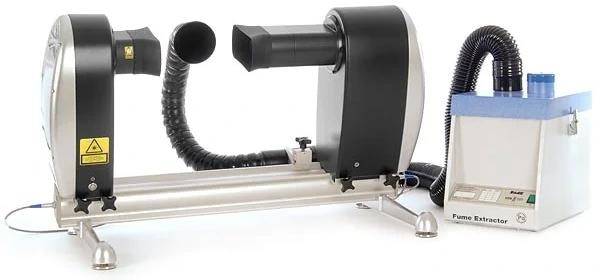
Image Credit: Malvern Panalytical Ltd
Inhaler and Nebulizer Accessory
The Spraytec Inhaler and Nebulizer Accessory enables users to accurately evaluate the droplet or dry powder particle size distributions produced by metered dose inhalers, dry powder inhalers, and nebulizers. Formulations can be quickly evaluated for appropriate dispersion qualities, providing researchers with the specific information needed to create innovative inhaled drug delivery solutions.
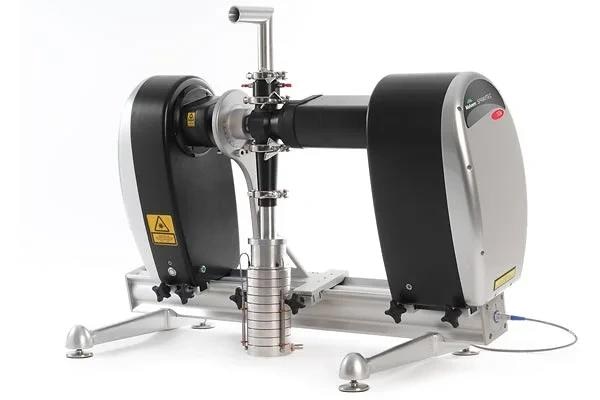
Image Credit: Malvern Panalytical Ltd
Nasal Spray Accessory
The Nasal Spray Accessory allows users to quantify the droplet or particle size distributions produced by nasal medication delivery devices in a reproducible manner, which is helpful for bioequivalence research and manufacturing quality control. Changes to the nasal spray device, formulation, or device actuation profile can all have an impact on the size of spray particles delivered.
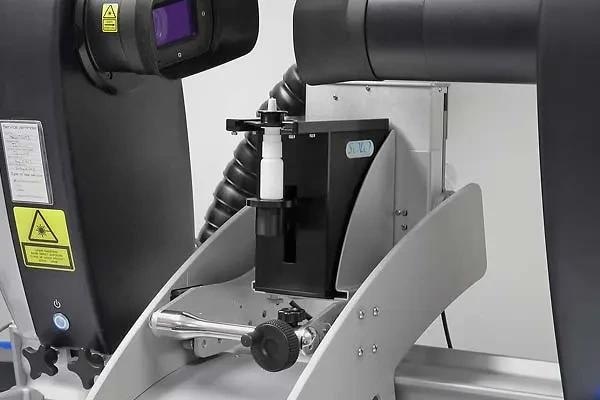
Image Credit: Malvern Panalytical Ltd
Wet Dispersion Accessory
The Spraytec Wet Dispersion Accessory is a low-cost liquid sample dispersion device that can measure samples in both aqueous and non-aqueous dispersants.
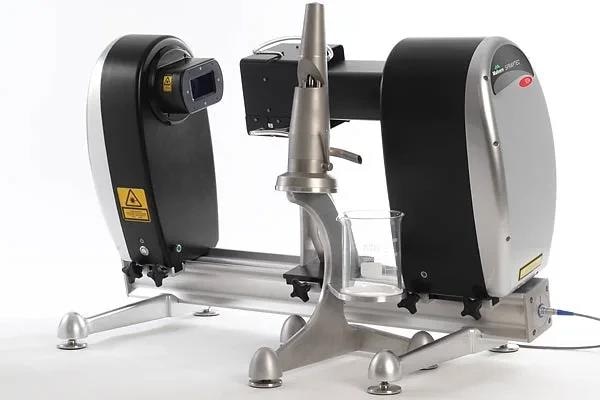
Image Credit: Malvern Panalytical Ltd
Support
Malvern Panalytical’s service plans protect the investment while always ensuring optimal performance.
Purchasing a Malvern Panalytical product is the beginning of a long-term collaboration that will continue for the instrument's lifespan. Malvern Panalytical will offer business assistance based on the user's needs.
Help Desk
- Email and phone assistance.
- Operators who answer the phone and make sure the query is addressed
Training
Software Downloads
- A straightforward way of getting upgrades and new features
Malvern Panalytical’s Service Options- Choose the Right Plan
Malvern Panalytical Platinum Plan
For laboratories where maximum instrument uptime is vital to daily performance, the greatest degree of response, along with the ‘all-inclusive’ price plan, covers any unforeseen repair charges that might arise.
Malvern Panalytical Gold Plan
Maintaining the efficiency of the instruments will increase laboratory production. Malvern will maintain the instrument performance on schedule by providing specialized technical and software support in addition to that priority response.
Malvern Panalytical Bronze Visit
Preventative maintenance must be performed regularly in laboratories to maximize instrument performance.
Source: Malvern Panalytical Ltd
| |
Platinum Plan |
Gold Plan |
Bronze Visit |
| Annual PM/PV Test |
yes |
yes |
no |
| Telephone / Email Support |
yes |
yes |
no |
| Priority Response |
yes |
yes |
no |
| Emergency Breakdown visits* |
yes |
yes |
no |
| Parts Included |
yes |
no |
no |
| Technical & Software Support |
yes |
yes |
yes |
| IQ/OQ (Pharma)*** |
yes |
yes |
yes |
*including labour & travel costs
***available at an additional cost
Key Applications
The Spraytec system’s adaptability makes it ideal for use in various sectors, from batch release testing and product quality control to fundamental research and development.
It provides precise, reproducible spray size analysis in an easy-to-understand way, enhancing product understanding and control.
Orally inhaled and nasal drug products
Particle size largely determines the deposition pattern and bioavailability of therapeutic components supplied to the nasal mucosa and respiratory system via pump sprays and inhalers. The Spraytec system can track size changes caused by single-device actuation, allowing the dynamics of particle dispersion to be recognized and the device’s reproducibility to be enhanced. Rapid screening of formulations for appropriate spray characteristics reduces development time and enhances drug delivery effectiveness.
Routine Atomizer Characterization
The measurement of droplet size generated by atomizer systems is critical in enhancing process understanding and knowledge of spraying’s environmental impact, such as in coatings or agrochemical applications.
The Spraytec’s durable construction, effective air purge, and multiple scattering analysis allow measurements to be taken at high concentrations within a spray plume, giving the real-time data needed to detect particle size changes throughout atomizer operation.
Automotive Applications
The Spraytec’s capacity to measure at 10 kHz allows for the resolution of changes in droplet size noticed during rapid firing of automotive fuel injector systems. The availability of numerous triggering options guarantees that each injection event is completely recorded. The repeatability of atomization can then be evaluated and compared to combustion efficiency.
After using and analyzing my spray, I found Spraytec one of the best, most effective and easiest ways to characterize my spray. The Spraytec gives accurate and perfect results for the measurement of droplet size of spray. Moreover, it is very easy and safe to use, the laser is not so strong, so it doesn't effect you at all. Thank you Malvern Panalytical for such a great product.
Rizwan Minhas, LEGI Laboratory

This information has been sourced, reviewed and adapted from materials provided by Malvern Panalytical.
For more information on this source, please visit Malvern Panalytical.